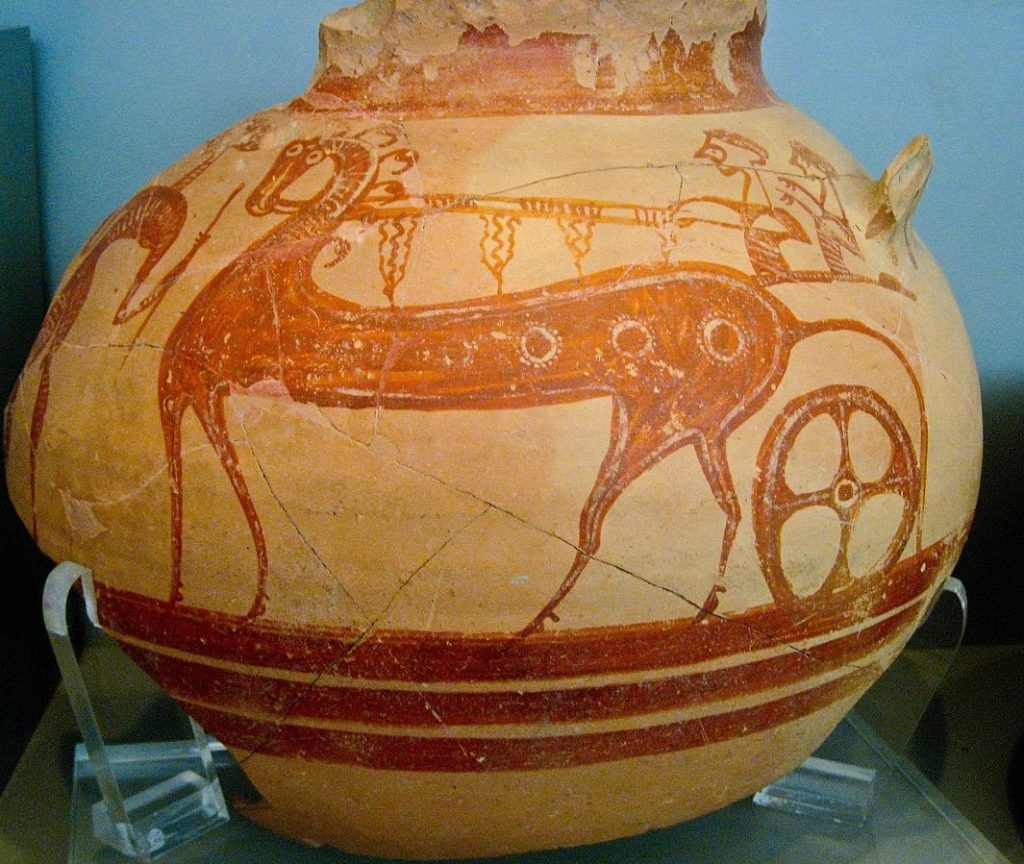During the Bronze Age, the Mycenaean Greeks used impressive chariots as a mode of transport and an intimidating vehicle of war.
Most of what modern historians and archaeologists know about Mycenaean chariots is derived from depictions on frescoes and fragments of pottery, as well as some literary descriptions in works such as the Iliad.
Although the use of the chariot as a weapon of war by the Greeks generally faded after the Bronze Age, the later Greek city-states and kingdoms that succeeded the Mycenaeans continued to use chariots for transport, ceremonial purposes, and sporting events, like the Olympic Games.
According to archaeologist Rita Roberts, chariots were most likely invented in the Near East and adopted by the Mycenaeans sometime in the late 16th century BC, possibly from the Hittites.
Surprisingly, the adoption of the chariot by the older Minoan civilization centered on Crete appears to have taken place after its usage spread to mainland Greece amongst the Mycenaeans.
Roberts identifies four main types of chariot used by the Mycenaeans: the “box chariot”, the “quadrant chariot”, the “rail chariot”, and the “four-wheeled chariot”. Each chariot had a slightly different design and was suited to different purposes but Mycenaean chariots did possess certain features in common.
Typically, Mycenaean chariots were designed for a team of two horses, harnessed to a central pole. In cases where two extra horses were utilized, they would be attached to the main team on either side, connected by a single bar affixed to the front of the chariot.
The chariot itself featured a basket with side rails and a “footboard” where the driver stood. The body of the chariot directly rested on the axle that connected the two wheels.
Each horse’s harness consisted of a bridle and reins, typically crafted from leather and adorned with ivory or horn studs. The reins passed through collar bands or a yoke and were long enough to be tied around the charioteer’s waist, enabling him to defend himself when necessary.
Wood was commonly used for the wheels and basket of the chariot, with bronze reinforcements in certain areas. The basket occasionally had a covering of wicker wood. The wheels boasted four to eight spokes.
There is some debate as to how the Mycenaeans deployed chariots on the battlefields of the Bronze Age.
Homer’s description of chariot warfare in the Iliad suggests that they were mainly used as “battlefield taxis” to convey warriors from one part of the battlefield to another. Homer described heroes like Achilles, Idomeneus, and Diomedes being driven to parts of the battlefield by their trusted charioteers. The heroes would then typically dismount to face their foes on foot whilst their charioteer would wait nearby.
Not all modern historians agree that Homer’s description of chariot warfare was accurate. That the chariot team consisted of a charioteer and a mounted warrior is generally not disputed, but the latter’s role has been brought into question. For example, P. A. L. Greenhalgh’s theory is that the warrior remained mounted on the chariot and would thrust at enemies with a long spear as massed chariot formations crashed into the enemy.
Alexander Gale
ΟΔΥΣΣΕΙΑ, 13/7/2024 #ODUSSEIA #ODYSSEIA, Greek Reporter

